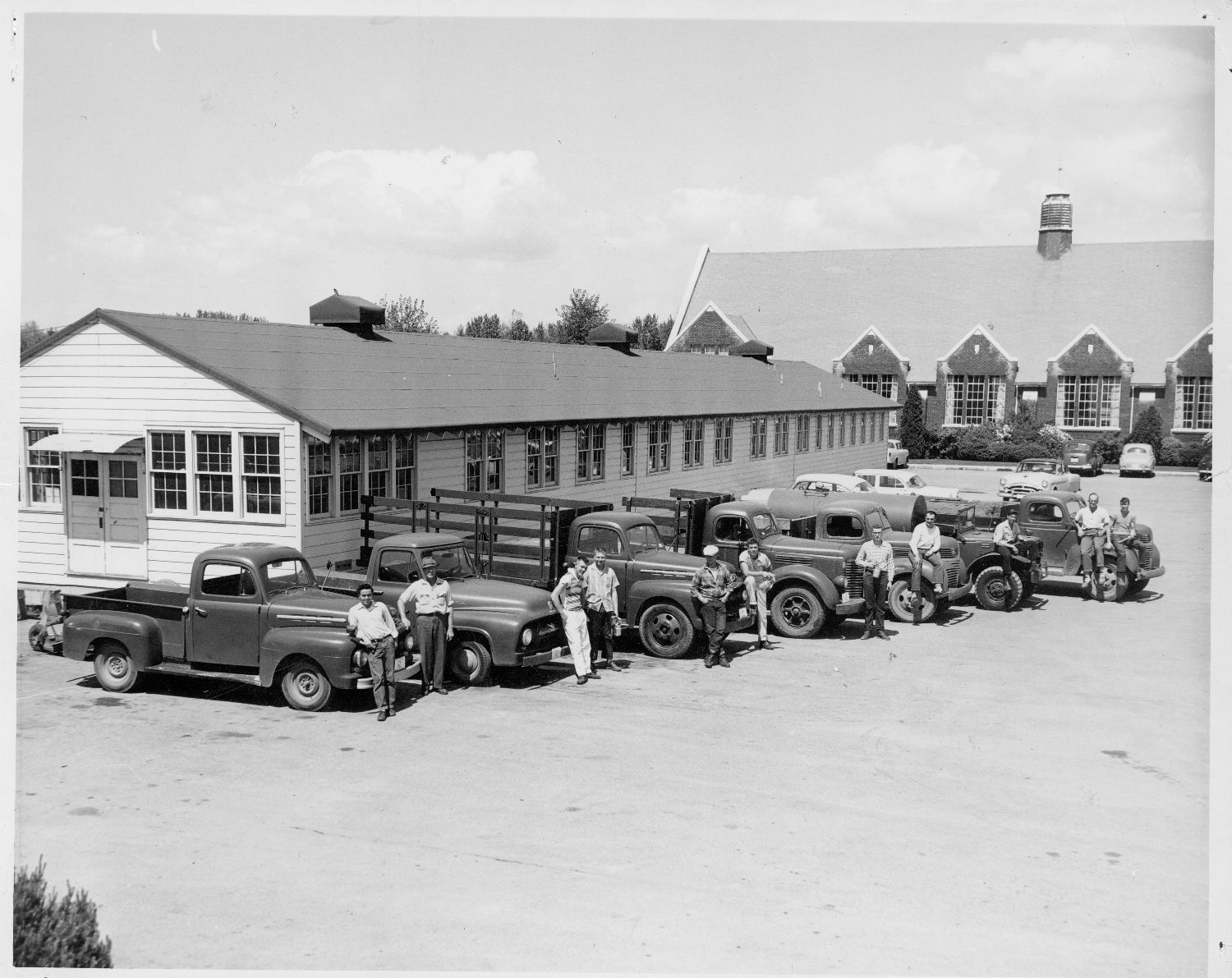Between years of 1939-1945, Boise Junior College experienced many changes including the physical campus expansion, curriculum changes, and faculty and students who left school to help their country both overseas and locally.

Originally at St. Margaret’s Hall located at 1st and Idaho Streets, the campus moved to its current site in 1940. The first four buildings were: the Administration Building (1940), the Heating Plant (1940), the Auditorium (1941, now the Hemingway Building), and the Student Union Building (1942, now the Communications Building). The Administration Building housed classrooms, faculty and administrative offices, the library, and student gathering spaces. The Assembly Hall was the site for music performances and commencements. The Heating Plant was built by the Work Projects Administration and utilized coal and diesel fuels to heat campus buildings.
During the war, enrollment dropped as faculty and students left to serve their country, including: President Eugene B. Chaffee, Professor Norman B. Adkison (Psychology), Professor Barton McMath (Business), and many others. Many feared the college might close, including Acting President Francis Haines. He stepped down, believing he could not properly lead the college in Chaffee’s absence.
The Board of Trustees did all in their power to keep the college functioning. To meet current needs, they changed the curriculum and introduced classes relevant to students during the time of war. They cut programs such as Forestry, strengthened their Pre-Medic and Pre-Nursing programs, and changed the Education program to increase women’s attendance. Classes such as personnel management, cost accounting, and aviation were added. To elevate the school’s academic status, the Board hired more faculty with master and doctorate degrees. The number of faculty members fluctuated from 33-37. Enrollment varied, with the high point of 585 students in 1942, and low point of 204 in 1944.
Students formed clubs that help in the war effort: Minute Maids, Pegasus, Civil Aeronautics Authority, and the Future Officers Club. These clubs helped students to prepare to be soldiers and pilots, as well as raised money and supplies for the troops overseas.
When the war ended, the fear that the college might close subsided. Enrollment climbed, from 320 students in 1945 to 855 students in 1946. BJC weathered the war and came out strong.
Sources:
Boise State University: Searching for Excellence, 1932-1984 by Glen Barrett
Boise Junior College Catalogs, 1937-1945
Boise College: An Idea Grows by Eugene Chaffee
Les Bois Yearbooks, 1940-1944